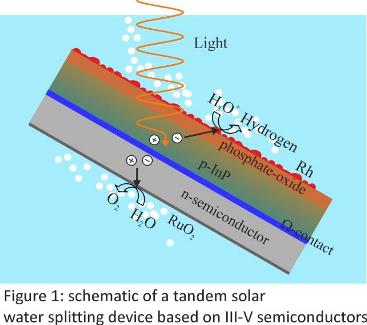
Andres G. Munoz
Professor
Title: Progress and Challenges in Galvanic Activation of Electrodes for Solar Water Splitting
Biography
Biography: Andres G. Munoz
Abstract
Solar water splitting tandem devices are a promising route for building a carbon-neutral energy infrastructure based on hydrogen as a fuel. The development horizon suggests the use of technologically advanced semiconductor materials, mainly III-V ones, due to its fast technical realization. The coupling of high-efficiency photovoltaics with electrochemical water splitting processes (two in one systems) requires from smart conditioning methods to turn semiconductor surfaces electrochemical active (figure 1). Particularly, the decoration of with noble metals, such as Pt and Rh is one of the most pursued approaches in the design of photocathodes to be integrated in tandem-type devices. Electroplating is preferred method due to its simplicity, its low cost and its power for accessing hidden places in complicated geometrical shapes (structured surfaces with enhanced photonic properties). The optical and electrocatalytic performance of deposited metal films can be enhanced by achieving a particular size and distribution of their nano-dimensioned grains. The chemical composition of the electrolytic bath, the applied potential program and illumination intensity constitute the main tools to do this. Electroplating of noble metals, however, triggers interfacial reactions generating chemical and electronic surface transformations. This is due to the complex multi-electron transfer involved in the metal phase formation and the particular high thermodynamic redox potential. Therefore, the selection of a galvanic method must balance coupled interfacial processes with desired properties of the electrocatalytic film. The complex picture of electrocrystallization of Rh will be discussed in the light of experiments performed on silicon, InP and GaInP. These systems are characterized by the formation of an interfacial oxide film separating electrocatalytic particles from the absorbing semiconductor. The composition and electronic structure of this latter builds a particular energetic pathway chart that defines the electrode performance.


